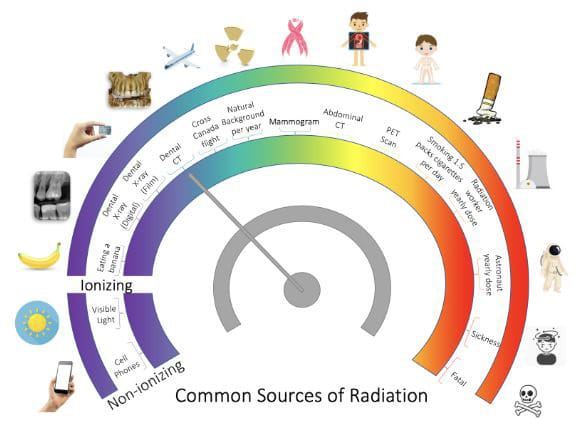
Radiation of Dental X-Rays: What You Need to Know
Dental X-rays are a routine part of oral health care, providing critical insights that help dentists diagnose, monitor, and treat a wide range of dental conditions. However, many patients have concerns about the radiation exposure associated with X-rays. How much radiation do dental X-rays involve? Are they safe? And what precautions are taken to protect patients? In this post, we’ll break down the facts about radiation in dental X-rays and why they are considered safe and essential.
Understanding Radiation in X-Rays
Radiation is a form of energy, and X-rays use a very small amount of ionizing radiation to create images of your teeth, bones, and soft tissues. Ionizing radiation is the type that can potentially affect cells in the body, which is why it is monitored carefully in medical settings. However, the dose of radiation from dental X-rays is extremely low—especially when compared to other medical imaging procedures or everyday sources of background radiation, such as sunlight, soil, and even certain foods.
For example, a single bitewing X-ray—a common type used to detect cavities between teeth—exposes you to about 0.005 millisieverts (mSv) of radiation. For perspective, the average person in the United States receives about 3 mSv of background radiation per year from natural sources.
Types of Dental X-Rays and Their Radiation Levels
There are several types of dental X-rays, each with slightly different radiation doses depending on the area being examined:
- Bitewing X-rays: These focus on the back teeth and are commonly used during checkups. The radiation dose is very minimal.
- Periapical X-rays: These show an entire tooth, from crown to root, and are helpful in diagnosing abscesses or bone loss.
- Panoramic X-rays: These provide a full view of the entire mouth, including teeth, jaws, and sinuses, and use a slightly higher dose than individual intraoral X-rays.
- Cone Beam CT (CBCT): Used for more complex procedures like implants or orthodontic planning, this 3D imaging method delivers a higher dose than standard X-rays but still within safe limits when used appropriately.
Digital X-Rays: A Safer, More Efficient Option
Modern dental offices increasingly use digital X-ray technology, which significantly reduces radiation exposure—by up to 80% compared to traditional film-based systems. Digital X-rays are not only safer but also more efficient, offering quicker results and better image quality, which can enhance diagnostic accuracy.
Safety Precautions in the Dental Office
Dentists follow strict guidelines to minimize radiation exposure for patients. Here are some common safety measures:
- Lead Aprons and Thyroid Collars: These protective shields are used to cover the body and thyroid gland, further reducing any potential exposure.
- Limiting Frequency: X-rays are only taken when necessary, based on your oral health, age, and risk factors. For most healthy adults, bitewing X-rays are recommended every 1 to 2 years.
- Targeted Imaging: Dentists take X-rays of specific areas, not the entire mouth, unless a full scan is needed.
- Equipment Maintenance: X-ray machines are regularly inspected and calibrated to ensure they’re operating safely and effectively.
Radiation and Special Populations
Extra care is taken with certain groups, such as children and pregnant women. Children are more sensitive to radiation, so pediatric dentists use child-sized settings and limit exposure as much as possible. Pregnant patients are usually advised to postpone non-urgent X-rays, although dental X-rays are still considered safe with proper shielding if needed.
The Benefits Far Outweigh the Risks
While the word “radiation” can be intimidating, the amount used in dental X-rays is extremely small and well within safe limits. With modern digital technology and strict safety protocols, dental X-rays pose minimal risk and play a vital role in protecting and maintaining your oral health.
By enabling early detection of problems like tooth decay, bone loss, infections, and impacted teeth, dental X-rays help prevent more serious issues and support more effective treatment. So, if your dentist recommends X-rays, you can feel confident that it’s a safe and necessary step toward keeping your smile healthy.
